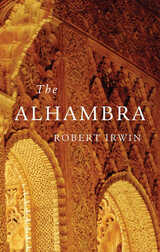
The Alhambra has long been a byword for melancholy beauty. In his absorbing new book, Robert Irwin, Arabist and novelist, examines its history and allure.
The Alhambra is the only Muslim palace to have survived since the Middle Ages. Built by a threatened dynasty of Muslim Spain, it was preserved as a monument to the triumph of Christianity. Every day thousands of tourists enter this magnificent site to be awestruck by its towers and courts, its fountained gardens, its honeycombed ceilings and intricate tile work. It is a complex full of mysteries—even its purpose is unclear. Its sophisticated ornamentation is not indiscriminate but full of hidden meaning. Its most impressive buildings were designed not by architects, but by philosophers and poets. The Alhambra, which resembles a fairy-tale palace, was constructed by slave labor in an era of economic decline, plague, and political violence. Its sumptuously appointed halls have lain witness to murder and mayhem. Yet its influence on art and on literature—including Orientalist painting and the architecture of cinemas, Washington Irving and Jorge Luis Borges—has been lasting and significant. As our guide to this architectural masterpiece, Robert Irwin allows us to fully understand the impact of the Alhambra.
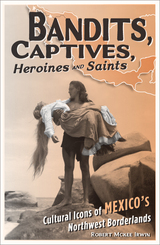
Bandits, Captives, Heroines, and Saints investigates cultural icons of the late nineteenth century from Mexico’s largely unstudied northwest borderlands, present-day Sonora, Baja California, and western Chihuahua. Robert McKee Irwin looks at popular figures such as Joaquín Murrieta, the gold rush social bandit; Lola Casanova, the anti-Malinche, whose marriage to a Seri Indian symbolized a forbidden form of mestizaje; and la Santa de Cabora, a young faith healer who inspired armed insurgencies and was exiled to Arizona.
Cultural icons such as Murrieta, Lola Casanova, and la Santa de Cabora are products of intercultural dialogue, Irwin reveals, and their characterizations are unstable. They remain relevant for generations because there is no consensus regarding their meanings, and they are weapons in struggles of representation in the borderlands. The figures studied here are especially malleable, he argues, because they are marginalized from the mainstream of historiography.
A timely analysis, Bandits, Captives, Heroines, and Saints challenges current paradigms of border studies and presents a rich understanding of the ways in which cultural icons influence people’s minds and lives.
Robert McKee Irwin is associate professor of Spanish at the University of California, Davis, and the author of Mexican Masculinities (Minnesota, 2003).
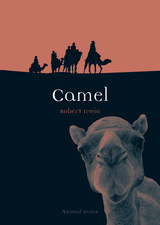
A distinct symbol of the desert and the Middle East, the camel was once unkindly described as “half snake, half folding bedstead.” But in the eyes of many the camel is a creature of great beauty. This is most evident in the Arab world, where the camel has played a central role in the historical development of Arabic society—where an elaborate vocabulary and extensive literature have been devoted to it.
In Camel, Robert Irwin explores why the camel has fascinated so many cultures, including those cultivated in locales where camels are not indigenous. Here, he traces the history of the camel from its origins millions of years ago to the present day, discussing such matters of contemporary concern as the plight of camel herders in Sudan’s war-torn Darfur region, the alarming increase in the population of feral camels in Australia, and the endangered status of the wild Bactrian in Mongolia and China. Throughout history, the camel has been appreciated worldwide for its practicality, resilience, and legendary abilities of survival. As a result it has been featured in the works of Leonardo da Vinci, Poussin, Tiepolo, Flaubert, Kipling, and Rose Macaulay, among others. From East to West, Irwin’s Camel is the first survey of its kind to examine the animal’s role in society and history throughout the world.
Not just for camel aficionados, this highly illustrated book, containing over 100 informative and unusual images, is sure to entertain and inform anyone interested in this fascinating and exotic animal.
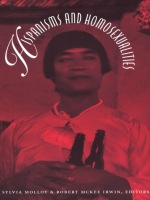
In Hispanisms and Homosexualities, editors Sylvia Molloy and Robert Irwin bring together a group of essays that advance Hispanic studies and gay and lesbian studies by calling into question what is meant by the words Hispanic and homosexual. The fourteen contributors to this volume not only offer queer readings of Spanish and Latin American texts and performances, they also undermine a univocal sense of homosexual identities and practices. Taking on formations of national identity and sexuality; the politics of visibility and outing; the intersections of race, sexuality, and imperial discourse; the status of transvestism and posing; and a postmodern aesthetic of camp and kitsch, these essays from both established and emerging scholars provide a more complex and nuanced view of related issues involving nationality, ethnicity, and sexuality in the Hispanic world.
Hispanisms and Homosexualities offers the most sophisticated critical and theoretical work to date in Hispanic and queer studies. It will be an essential text for all those engaged with the complexities of ethnic, cultural, and sexual subjectivities.
Contributors. Daniel Balderston, Emilie Bergmann, Israel Burshatin, Brad Epps, Mary S. Gossy, Robert Irwin, Agnes I. Lugo-Ortiz, Sylvia Molloy, Oscar Montero, José Esteban Muñoz, José Quiroga, Rubén Ríos Avila, B. Sifuentes Jáuregui, Paul Julian Smith
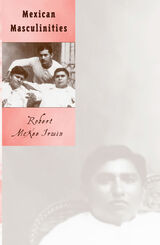
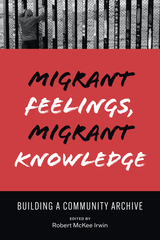
The digital storytelling project Humanizing Deportation invites migrants to present their own stories in the world’s largest and most diverse archive of its kind. Since 2017, more than 300 community storytellers have created their own audiovisual testimonial narratives, sharing their personal experiences of migration and repatriation. With Migrant Feelings, Migrant Knowledge, the project’s coordinator, Robert Irwin, and other team members introduce the project’s innovative participatory methodology, drawing out key issues regarding the human consequences of contemporary migration control regimes, as well as insights from migrants whose world-making endeavors may challenge what we think we know about migration.
In recent decades, migrants in North America have been treated with unprecedented harshness. Migrant Feelings, Migrant Knowledge outlines this recent history, revealing stories both of grave injustice and of seemingly unsurmountable obstacles overcome. As Irwin writes, “The greatest source of expertise on the human consequences of contemporary migration control are the migrants who have experienced them,” and their voices in this searing collection jump off the page and into our hearts and minds.
READERS
Browse our collection.
PUBLISHERS
See BiblioVault's publisher services.
STUDENT SERVICES
Files for college accessibility offices.
UChicago Accessibility Resources
home | accessibility | search | about | contact us
BiblioVault ® 2001 - 2024
The University of Chicago Press









